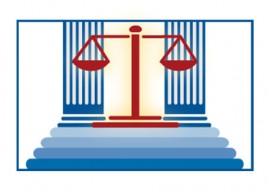Identifying Client in Closely-Held Business
By Mary C. Daly [Originally published in NYPRR October 2000]
Representing closely-held and family businesses is a vital part of many lawyers’ practices. These businesses frequently purchase legal services in a wide array of transactional and litigation matters. Indeed, the services that lawyers supply to closely-held and family businesses touch just about every aspect of the businesses’ operations and management.
Counseling these clients can be both financially remunerative and personally rewarding. It can also be an ethical minefield. Too often lawyers do not appreciate the disciplinary and liability risks until they are trapped in a representational conundrum. Extricating themselves with their reputations intact can often prove difficult, if not impossible.
Identifying the client is among the most difficult ethical issues that lawyers for closely-held and family businesses will meet. The difficulty arises from the disjunction between (1) the entity theory of representation reflected in the New York Code of Professional Responsibility (Code), the opinions of bar association ethics committees, and the relevant case law, and (2) the very natural human tendency on the part of both the lawyer and the small business owner to view the owner of the business as the lawyer’s true client.
The entity theory separates an organization from the human beings through whom it acts. The theory is most easily grasped in the context of a publicly traded, Fortune 500-type enterprise in which management and ownership are largely separate. It becomes harder to grasp when management and ownership are concentrated in a small — or even single — number of persons. Intuitively it is easy to distinguish Ford Motor Company from its constituents, but harder to distinguish “Joe & Pete’s Used Car Dealership” from “Joe” and “Pete,” its owners and only shareholders.
For historical reasons that are not altogether clear, the drafters of the original ABA Model Code of Professional Responsibility chose not to include any specific disciplinary rule governing the representation of an organization. In EC 5-18, the Code did caution, however:
“A lawyer employed or retained by a corporation or similar entity owes allegiance to the entity and not to the shareholder, director, officer, employee, representative, or other person connected with the entity. In advising the entity, the lawyer should keep paramount its interests and the lawyer’s professional judgment should not be influenced by the personal desires of any person or organization.”
EC 5-24 also warned a lawyer against “accept[ing] direction of his professional judgment from any layman.” [See also, DR 5-10, Avoiding Influence by Others Than the Client.]
The entity theory formally entered the pantheon of regulation in 1983 when the ABA House of Delegates adopted the Model Rules of Professional Conduct. Drawing on the well-established principles expressed in ECs 5-18 and 5-24 and in the case law, the drafters devoted all of Model Rule 1.13, to the representation of an organization. The two most pertinent subsections are (a) and (b). Subsection (a) captures the core of the entity theory succinctly: “A lawyer employed or retained by an organization represents the organization acting through its duly authorized constituents.” Subsection (b) continues by counseling a lawyer on how to proceed if a constituent is violating a fiduciary duty owed to the organization or committing a violation of law that might reasonably be imputed to the organization, and substantial injury to the organization is likely to occur. The comment to Rule 1.13 elaborates on these mandates, emphasizing the distinction between the organization and its constituents.
In 1990, the New York State Bar Association amended the Code to include a new DR 5-109. Entitled “Conflicts of Interest — Organization as Client,” the disciplinary rule focused on how a lawyer should proceed when “the organization’s interests may differ from those of the constituents with whom the lawyer is dealing.” It was not until 1999 that New York fell into step with the majority of the other states by amending DR 5-109 to create a disciplinary rule more generally relating to the representation of an organization. The amended version of DR 5-109 includes the text of Model Rule 1.13 almost verbatim.
Researchers examining DR 5-109 should consult judicial decisions and opinions of ethics committees interpreting MR 1.13. Useful resources include the ABA/BNA Lawyers Manual on Professional Conduct and the Annotated Model Rules of Professional Conduct published by the ABA.
DR 5-109 has no provision similar to Rule 1.13(a), but in light of the admonitions in ECS 5-18 and 5-24 and the tone of the text of DR 5-109, no particular significance should be attached to this omission. The entity theory remains core to a lawyer’s representation of an organization and appears to be firmly rooted in New York jurisprudence. [See e.g., Kushner v. Herman, 215 App. Div.2d 633, 628 N.Y.S.2d 123 (2d Dept. 1995), representation of a corporation is not representation of its shareholders; Association of the Bar of the City of New York, Formal Op. 1986-2 (1986), “primary allegiance” is owed to the client partnership not to the individual partners.]
Questions on the meaning and scope of the entity theory generally arise in connection with conflicts of interest and confidentiality. Tekni-Plex, Inc. v. Meyner and Landis [89 N.Y.2d 123, 674 N.E.2d 663, 651 N.Y.S.2d 954 (1996)], captures perfectly the dilemmas that can arise in representing closely held or family owned businesses. For the first 20 years of its existence, Tekni-Plex had 18 shareholders and was managed by a Board of Directors. Tom Y. C. Tang eventually became Tekni-Plex’s sole shareholder, president, chief executive officer, and director. The Meyer and Landis law firm (M&L) represented Tekni -Plex for over 23 years, including all eight years of Tang’s ownership. M&L represented Tekni -Plex and Tang in the sale of the company to TP Acquisition. In the merger agreement, Tekni-Plex provided certain warranties and representations with respect to environmental matters. After the sale, TP Acquisition changed its name to “Tekni-Plex” and commenced an arbitration against Tang, alleging breach of the warranties and representations. Tang hired M&L to represent him, but the new Tekni-Plex brought an action, inter alia, to enjoin M&L from representing Tang in the arbitration and to enjoin the law firm from disclosing confidential information learned in the representation of the former Tekni-Plex.
Construing the successive representations under DR 5-108, Chief Judge Kaye first asked if the new Tekni-Plex was a “former client” of M&L. She answered in the affirmative, relying on the fact that the new Tekni-Plex had continued the business of its predecessor “with same products, clients, suppliers and non-managerial personnel.” Having made that key determination, she concluded that DR 5-108 barred M&L from representing Tang in the arbitration, since his position was clearly adverse to that of the new Tekni-Plex.
In examining the confidentiality issue facing M&L, Judge Kaye distinguished the communications between M&L and the pre-merger Tekni-Plex on general business matters (including the company’s environmental law compliance) from communications on the merger negotiations. Control of the attorney-client privilege with respect to the latter communications had passed to the new Tekni-Plex; control of the privilege with respect to the former had remained with Tang. The basis for the distinction was twofold. First, the new Tekni-Plex’s cause of action did not derive from any rights it had inherited from the pre-merger company. Second, there existed a fundamental adversarial relationship between the seller and the acquirer with respect to the merger negotiations. The court feared that allowing access to such communications would chill the full and frank disclosure that the privilege was designed to foster between a lawyer and a client.
Judge Kaye described the Court’s conclusion on the privilege issue surrounding the merger communications as “especially compelling,” because the pre-merger Tekni-Plex was owned and managed by a single individual. In the court’s view, to decide otherwise would be the same as ordering a seller to surrender all its privileged communications with its lawyer whenever a dispute over the terms of sale subsequently erupted.
The Court’s logic with respect to the attorney-client privilege is eminently sensible. What is troubling about the decision is the court’s failure to acknowledge a similar public policy rationale with respect to the communications between Tang and M&L concerning the pre-merger business operations of old Tekni-Plex, including communications about environmental law compliance. Tang was the company’s sole shareholder, president, chief executive officer, and director for the eight years prior to the merger. It is unlikely that either Tang or M&L considered the pre-merger Tekni-Plex to be an entity separate from Tang. Yet the court pays little heed to this fairly obvious fact. The decision’s effect is to force Tang to hire new counsel who have no familiarity with the facts and to deny Tang and his new counsel any access to M&L, the law firm that is fully familiar with those facts and that counseled Tang on the very actions which are the subject matter of the arbitration. Tekni-Plex is hardly a decision that will foster full and frank disclosure between a lawyer and the owner of a closely-held or family business. Nor will it inspire the owner’s confidence in the legal system.
Mary C. Daly is James H. Quinn Professor of Legal Ethics at Fordham Law and Chair, Committee on Professional and Judicial Ethics, Association of the Bar of the City of New York.
DISCLAIMER: This article provides general coverage of its subject area and is presented to the reader for informational purposes only with the understanding that the laws governing legal ethics and professional responsibility are always changing. The information in this article is not a substitute for legal advice and may not be suitable in a particular situation. Consult your attorney for legal advice. New York Legal Ethics Reporter provides this article with the understanding that neither New York Legal Ethics Reporter LLC, nor Frankfurt Kurnit Klein & Selz, nor Hofstra University, nor their representatives, nor any of the authors are engaged herein in rendering legal advice. New York Legal Ethics Reporter LLC, Frankfurt Kurnit Klein & Selz, Hofstra University, their representatives, and the authors shall not be liable for any damages resulting from any error, inaccuracy, or omission.
Related Posts
« “Citrin” Case: Do Disbarred Lawyers Have Constitutional Rights? Lawyer’s Duty to Supervise Paralegals »








